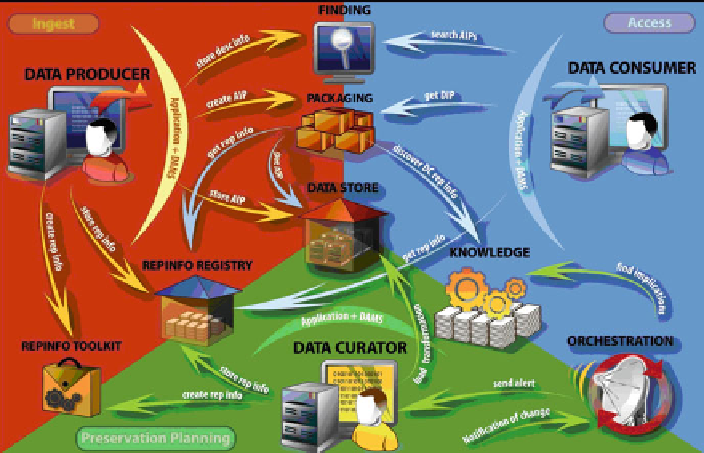Information Technology Reference
In-Depth Information
Fig. 23.1
Infrastructure components
•
The user must find the appropriate data needed for the task (using Finding Aids),
then must obtain the data (from the Archive)
•
Either the user knows how to use the application to deal with the data or else, by
definition, additional Representation Information is needed.
•
Additional Representation Information may be obtained from the Archive, or else
from somewhere else (from the Registry). That Representation Information may
itself need further Representation Information.
In the future, as time passes, additional Representation Information will be needed,
as the Knowledge Base of the Designated Community changes. The question is:
how can this Representation Information be identified and generated? The scenario
we have in mind, bearing in mind the previous discussion, is the following:
•
People know that things have changed - this may be the Data Preservers, or a
member of the Designated Community. These people inform something - the
RepInfo Gap Manager.
•
The RepInfo Gap Manager identifies a gap in some Representation Information
net. It is unlikely that the RepInfo Gap Manager itself can fill this gap. In general
only people can fill the gap, by generating new Representation Information. The
next question is “who should be asked to do this?” Again, the only answer to this
has to be provided by the individuals themselves.
•
In order to facilitate this network of people we need a component (the
Orchestration Manager) where people can register their experience or expertise.
The RepInfo Gap Manager informs the Orchestration Manager that some type of

